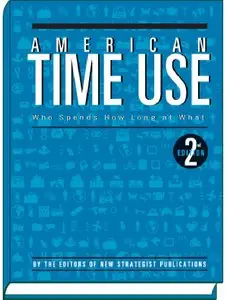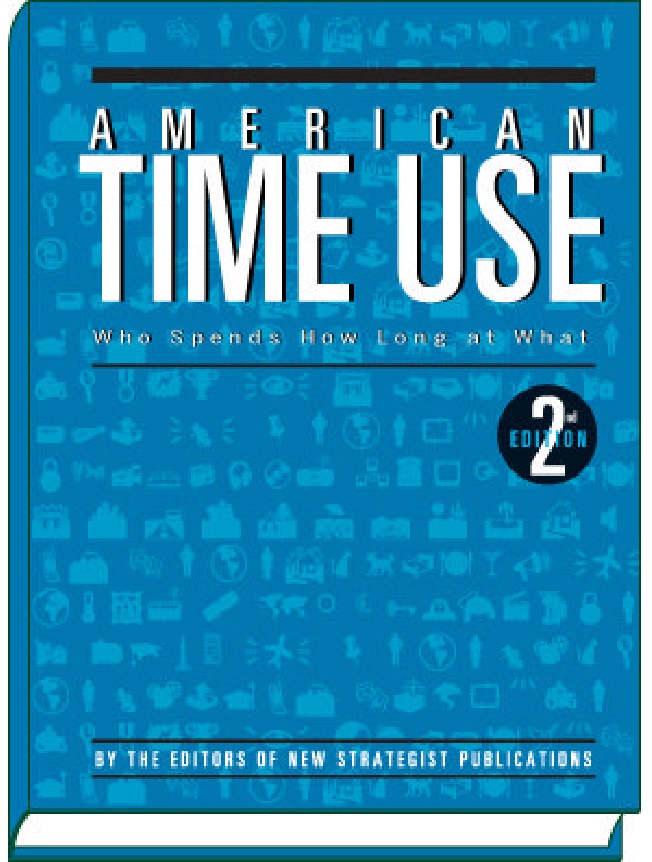American Time Use: Who Spends How Long at What by Inc. New Strategist Publications
English | 2010 | ISBN: 1935114840, 1935114859 | 476 pages | PDF | 1,5 MB
English | 2010 | ISBN: 1935114840, 1935114859 | 476 pages | PDF | 1,5 MB
Introduction
Every day each of us gets 24 hours to accomplish what we need to do and enjoy what we
want to do. The activities we choose to do during those 24 hours and the amount of time
we allot to each activity determines the quality of our family life, the unique features of our
culture, and the driving forces of our economy.
Several years ago, the federal government initiated a survey to collect data on how
Americans spend their time during an average day. Called the American Time Use Survey
(ATUS), this ongoing collection of data allows economists, policy makers, and sociologists
to better understand our economy and lifestyle and how policy decisions affect our lives.
Through telephone interviews with a nationally representative sample of Americans aged
15 or older, ATUS collects information in minute detail about what survey respondents did
during the previous 24 hours—or “diary day” (For more about ATUS methodology, see
Appendix A).
American Time Use: Who Spends How Long at What is your window into the vast
collection of American Time Use Survey data. Presented here are detailed tables and analysis
of results from the 2008 survey.
If you have ever wondered while watching TV why advertisers are so intent on selling
snacks or sleep aids or cleaning products—or even why they spend so much money
on television advertising itself—time use data has the answer. On an average day, eating
ranks fourth in our priorities, behind only sleep, work, and watching television (which is
why advertisers spend so much money on television spots). Cleaning the house ranks eighth
among our most time-consuming activities. And on an average night, millions of Americans
are sleepless, time-use statistics reveal.
American Time Use presents detailed time use data for the single most important demographic
characteristic for determining how people spend their time—their age. A person’s
age determines his or her lifecycle stage, and lifecycle stage determines whether he or she
is in school, in the work force, married, or a parent. Lifecycle stage sets our priorities, determining
how we spend our 24-hour allotment of time. How Americans Spend Their Time
puts you in the know, showing you what others are doing—from teens (15-to-19-year-olds)
to young adults (20-to-24-year-olds), from parents (25-to-34- and 35-to-44-year-olds) to
empty-nesters (45-to-54- and 55-to-64-year-olds) and from the go-go elderly to the slow-go
elderly (65-to-74-year-olds and those aged 75 or older).
The detailed time use data presented in American Time Use are not available on any
government web site. They were obtained by special request from the Bureau of Labor
Statistics. The comparisons of time use by lifecycle stage contained in this book are also
not available from the federal government. New Strategist’s statisticians analyzed the raw
time use data—number of people, average time, and participant time—to produce the percentages of people participating in activities, the indexes, and the rankings—each of which
reveals significant differences in time use by lifecycle stage. Government web sites are useful
for obtaining either general information (summary data) or for tapping into enormous
databases that require analysis by statistical programs. New Strategist has done the work
for you, providing analysis and comparisons, placing the important American Time Use
Survey at your fingertips.



